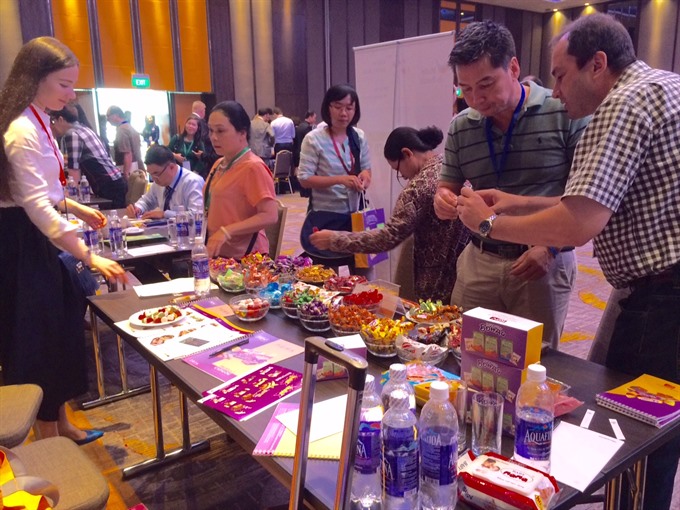 Economy
Economy

Executives from more than 20 Russian companies introduced their products to supermarkets, distributors and leading import and export companies at a meeting in HCM City yesterday.
 |
| Representatives of a Russian firm introduce its products to Vietnamese firms at a business-to-business meeting in HCM City on December 14. — VNS Photo |
HCM CITY — Executives from more than 20 Russian companies introduced their products to supermarkets, distributors and leading import and export companies at a meeting in HCM City yesterday.
The visitors’ companies specialise in food, mineral water, alcoholic beverages, children’s food, fruits, cooking oil, meat and meat-based products, confectionery and other consumer products.
Robert Kurilo, chief representative of Russian Export Centre in Việt Nam, said Việt Nam and Russia have had very good relations in many fields for many years, but bilateral trade remains modest.
The centre has stepped up promotion activities to acquaint Vietnamese companies and consumers with high-quality Russian products.
Đoàn Thị Mỹ Linh of the Saigon Trading Group said SATRA needs to import foreign food products to diversify goods in its supermarket.
Russian food products produced using green technologies and without using GM organisms would be popular with Vietnamese consumers, she said.
But participants at the meeting agreed that Russian food and beverage products would face fierce competition against products from other countries that are already available in Việt Nam.
According to the Russia-ASEAN Trading House, a trading mechanism between Russian exporters and potential business partners in Southeast Asia, the Việt Nam- Eurasian Economic Union (EAEU) free trade agreement that took effect on October 5 will offer a great advantage for Russian products in Việt Nam since import duties on more than 59 per cent of items are gone.
They include meat products, flour, alcohol, mechanical equipment and others.
According to the Ministry of Industry and Trade, Russia is the largest and most promising market of the five EAEU member countries – the others being Belarus, Kazakhstan, Armenia, and Kyrgyzstan -- accounting for 80 per cent of the bloc’s total trade.
Việt Nam is Russia’s largest trading partner in Southeast Asia, but the numbers remain modest compared to the potential, accounting for around 1 per cent of their respective trade.
The FTA is expected to boost bilateral trade from nearly US$4 billion last year to $10 billion by 2020, it said. — VNS




